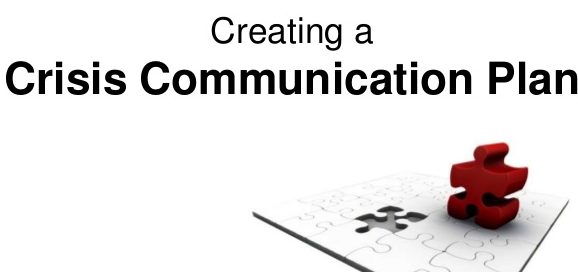Digital marketing is an effective way to reach current and potential customers. You can introduce new products or services, showcase company and client achievements and inform your market on how you can help them achieve their goals.
Whether you are a seasoned pro at digital marketing or just starting to implement your plan, below are seven digital marketing tactics you don’t want to overlook. 
Establish Clear Objectives and Target the Right Audience
It may sound simple, but having clearly defined objectives before implementing a digital marketing strategy is critical. For example, who is your target audience? Often business owners will say “everyone” is a potential buyer. Don’t kid yourself; no they are not!
Your target market may be large, but not everyone is interested in your product or service. The good news is there is an audience who is interested and uses your product. Hopefully, you already know who they are. If not, there are several tools you can utilize to define your market.
Even if you produce excellent content, targeting the wrong audience or too large an audience will often prove ineffective. Digital marketing works, but all channels are getting noisier by the day and it’s important you invest time and efforts into identifying your best audiences.
We’ll touch on this later, but if you can’t identify your target market, then measuring results is virtually impossible.
Personalization Helps You Employ a Customer-Based Strategy
Names, gender, and individual tastes are important. If you know who your customers are, then tailor your message to them. Is there a specific individual within a company that you deal with? If so, you should know their name and acquire basic information about them. Do you know who your prospects are? Sending marketing material to the CEO is a mistake when a department manager is responsible for acquiring your product or service.
Digital marketing can play a key role in enticing prospects to become loyal customers. By personalizing your offers, you can more effectively target and analyze your data, which in turn helps you become a more effective marketer.
Know the Social Media Platforms Your Customers and Prospects Use
What are the most common social media platforms your target audience uses and how do they utilize each platform?
Facebook is still king. A high percentage of both individuals and companies hang out there and boosting posts to your target market is usually a cost-effective strategy. However, it’s a strategy you need to employ with consistency.
If you are selling to a C-Suite or executive audience, you should incorporate LinkedIn into your digital strategy. It’s also important to know when they are most likely to see your post.
LinkedIn users hang out on the site during business hours, with peak times in the early morning hours, around lunch and at the end of the business day. Posting a well-written piece on LinkedIn around noon on Saturday probably won’t be seen by your target audience. However, one of the best times to post on Facebook is mid-day on Saturday. That’s another reason why it’s important to understand who your target audience is and where they hang out.
Also, don’t neglect to incorporate a mobile strategy into your digital plan. Statistics can vary depending on the study, but according to Salesforce, over 60 percent of online purchases on Cyber Monday in 2017 were made on mobile devices. These include smartphones and tablets. This is up from 54 percent the previous year.
It’s Okay to Be Social On Social Media
Social media platforms should not be considered another billboard. It’s designed to engage people and encouraging a dialogue is an excellent way to showcase your company and ultimately your products and services.
Showcase company functions or discuss the convention and seminar you recently attended. Let your customers know you are working hard to educate yourself and learn techniques and strategies to better serve their needs.
If your business involves hospitality and a customer comments on your food or location, engage them. Thank them for a good review or comment. If they complain or leave negative comments, respond quickly and offer to communicate with them “offline” so you can resolve the issue outside of social media. Many times a negative experience can lead to a positive one if handled promptly.
Identify an Individual or Team to Implement Your Digital Strategy
Start-ups and small companies are often overwhelmed and stretched thin with a handful of people performing multiple duties. Assign someone with knowledge and expertise to manage your digital strategy.
If you have the resources to hire someone internally, that’s great. If not, you need to find an outside agency to assist you. Often the president or CEO assumes responsibility for digital strategy and then realizes several days have passed and nothing has been posted. Well-devised digital strategies can be highly effective. However, they don’t run well without proper attention. Make sure whoever has responsibility for your digital strategy is competent and engaged.
Communicate With Senior Management and Sales Teams
Digital marketing plans disseminate and collect vital information. You should not market a product or service unless your sales force or company can deliver in a timely fashion.
Great products have failed because they were promoted but the company lacked the resources to deliver them. Make sure executives and sales leaders are on the same page and understand promotions and offerings. Ask for their input on a consistent basis. They can provide important information about your product or service from prospects and customers.
Test and Evaluate Your Digital Strategies
Finally and most importantly, test your digital strategies. This allows you to spend your digital dollars wisely. There are many tools to measure results, from the simple to the complex.
Google Analytics is a must. So is testing using what’s known as A/B splits. For example, use different headlines for the same digital or email campaign to the same audience. Does one generate more clicks or opens than the other? This is a simple example and there are many ways to test strategies. Whoever oversees your digital strategy should be updated and informed of the multiple testing methods.
Interested in learning more about how digital marketing strategies can grow your business? Give me a call at 901.409.5259 and we’ll sit down and discuss your situation.






